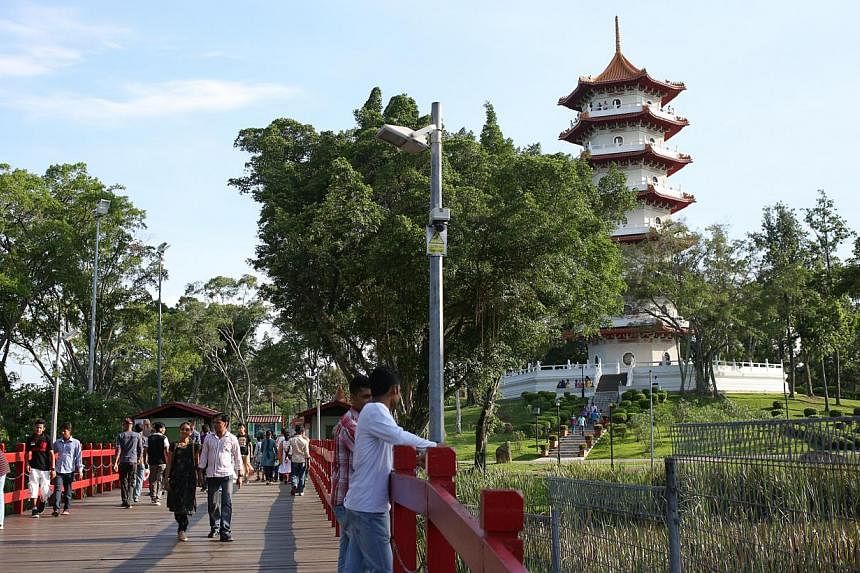Fancy being driven around the lakes of Jurong in a buggy that does not have a driver?
This risky-sounding idea will become a reality when Singapore's first driverless vehicles for the public take to the tarmac in the third quarter of this year. But don't worry, they should be perfectly safe.
The two golf buggies are each fitted with $30,000 worth of technology which ensures that they stick to programmed routes and avoid collisions.
They are expected to ply the footpaths of the Chinese and Japanese gardens, which measure around the size of 26 football pitches.
The Straits Times understands the rides are likely to be free to members of the public who want to try them, in an effort to get Singaporeans used to this futuristic mode of transport.
Sources say more buggies are expected to be deployed at Jurong East MRT station early next year to shuttle residents to nearby buildings or amenities.
"The whole idea is to raise awareness and the public's acceptance of such a mode of transport for the initial and final legs of a typical journey," said a source close to the project. This could mean the journey from a train station to a bus stop or a nearby library.
The Straits Times understands that users operate the converted buggy - which seats three people - via a touchscreen or a smartphone app by clicking on preset routes.
It will be displayed at this year's CommunicAsia, the region's largest communications trade event, from June 17 to 20 at Marina Bay Sands. The idea is understood to be a response to the Infocomm Development Authority's (IDA) call for collaboration in May last year to turn the Jurong Lake District into a machine-driven "smart city".
An IDA spokesman confirmed it is testing different solutions - including autonomous buggies - at Jurong Lake District. She would not reveal details, but noted: "For a smart nation, it is important for us to explore new technologies such as autonomous vehicles."
The buggies have been developed by the Singapore-MIT Alliance for Research and Technology (Smart) and the National University of Singapore (NUS). They use technology that governs the vehicle's motion and direction without using a Global Positioning System. This was first demonstrated in their driverless Mitsubishi electric car, showcased in January, which can reach speeds of up to 130kmh.
Dubbed Shared Computer Operated Transport, it is an ongoing research project, and its future uses have yet to be determined. "We are in discussion with the authorities to explore how best our research should be directed," said Dr James Fu, project leader at Smart's future urban mobility unit.
Engineer John Wong, 36, backed the idea, which is similar to Google's driverless car that is being tested in California. "Smart and NUS' technology could be fitted to a larger vehicle for ferrying passengers," he said.
However, the buggies have to win over Jurong residents. "I am already peeved by cyclists on walkways," said housewife Sakura Siow, 40. "They almost knocked down my four-year-old daughter on several occasions."
Communications consultant Priscilla Wong, 36, said: "Until the authorities sketch it out clearly, it is hard to see the real benefits."


